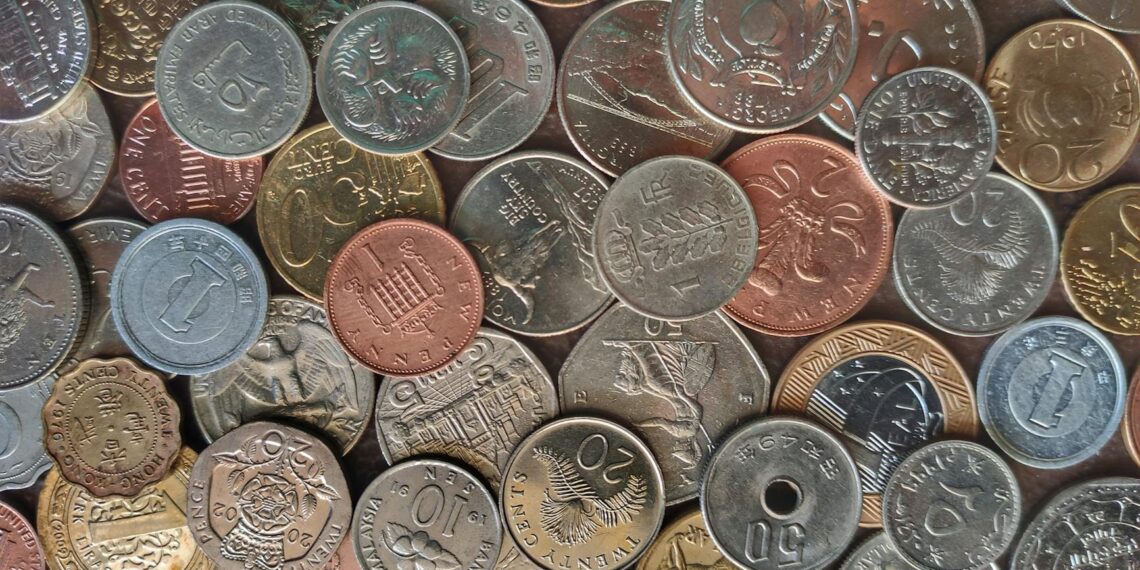While both brass and gold coins can have a yellowish metallic sheen, there are several ways to differentiate between the two:
- Color: Gold is typically a brighter, more vibrant yellow, while brass can appear duller and may have greenish undertones.
- Luster: Gold is generally shinier and more lustrous than brass.
- Tarnish: Brass is an alloy of copper and zinc and will react with oxygen in the air, leading to tarnishing and discoloration over time. Gold, however, is a non-reactive metal and will not tarnish. You can also try cleaning and polishing the suspected brass to see if its color brightens.
- Gold is significantly denser than brass. [According to Thomasnet] , brass has a density of 8.4 to 8.7 grams per cubic centimeter (g/cm³), while gold has a density of 19.3 g/cm³, [according to AU Bullion Canada].
- Weight Test: You can roughly assess the density difference by comparing the weight of a suspected gold coin with a known brass coin of similar size. Gold will feel noticeably heavier.
- Gold is a softer metal than brass. On the Mohs hardness scale, gold has a hardness of around 2.5, while brass is typically between 3-4.
- Scratch Test (Use with caution): Gently rub the coin against an unglazed ceramic surface. Real gold will leave a faint golden yellow streak, while brass will leave a black or dark grey streak. Note that this test may damage the coin’s finish, so proceed carefully.
- Gold is not magnetic. If the coin is attracted to a strong magnet, it’s not pure gold. However, it’s important to remember that not all non-magnetic metals are gold; for example, aluminum, copper, and bronze are also non-magnetic.
- Check for markings: Gold jewelry and coins are often stamped with a karat count (e.g., 10K, 14K, 24K) to indicate their purity. Brass items will not have a karat count.
- This test is destructive and should only be performed on a small, inconspicuous area of the coin. [According to wikiHow] , apply a small amount of concentrated nitric acid to the coin.
- Reaction: Brass will react with the acid (showing bubbling or discoloration), while gold will not.
- If you are unsure about the authenticity of your coin or want a definitive answer, it is best to consult with a professional jeweler or coin appraiser.
- Some of these tests, like the acid test or the scratch test, can potentially damage the coin, so proceed with caution.
- The context of the coin’s origin can also provide clues. For example, some historical coins might be made from brass alloys, [according to Wikipedia].
By carefully considering these factors, you can increase your chances of distinguishing between gold and brass coins.











How to test if a coin is gold?
Use A Magnet Test
Gold is non-magnetic. If a gold coin is attracted to a magnet, it likely contains other metals and is not pure gold. This simple test can quickly rule out many fakes.
Do gold coins stick to a magnet?
I can help with that. However, you can perform some simple tests with a magnet or other household items. GOLD — Gold is not magnetic. Testing requires a stronger than average magnet (the type of strong magnet found at your local, specialized hardware store). If your “gold” coin or bar sticks to your strong magnet it is fake.
Is brass mistaken for gold?
Brass and gold finishes can look similar, but gold is shinier and has a more yellow tone to it. Polished brass finishes especially look very similar to gold, but brass has a slightly duller tone and isn’t as vibrant.